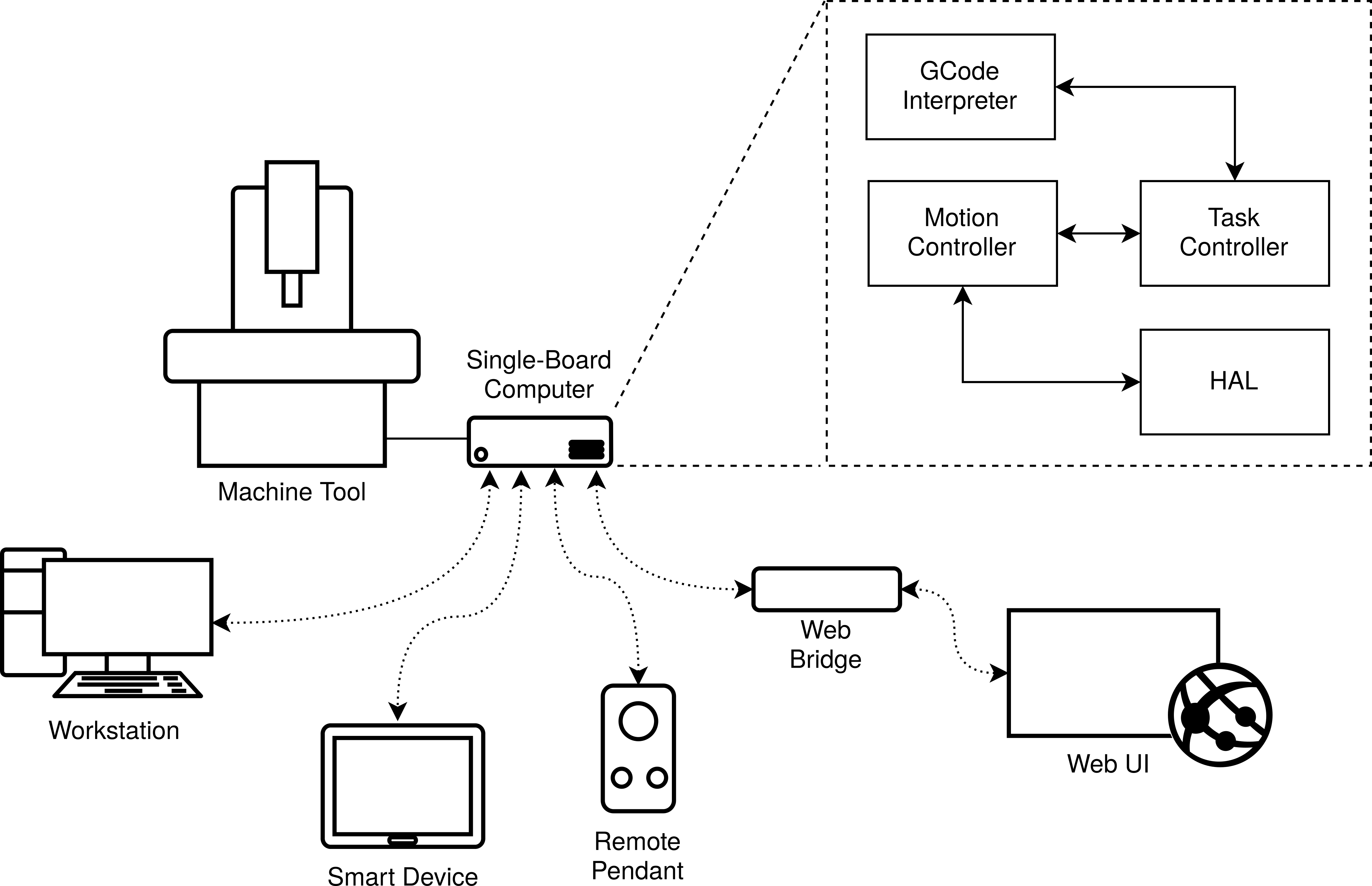4 minutes read
Rendering to a monochrome OLED display with QML In this blog post, you will learn how to write QtQuick applications for an OLED display without modifying the Linux kernel. My testing system is an SSD1306 based 128x64 monochrome OLED display connected via I2C to the CHIP single board computer. Motivation I recently came across a post on the Qt Blog ...
Qt Creator for Gtkmm and Automake Projects
2 minutes read
In this blog post, you will learn how to use Qt Creator for Automake and Gtkmm project. Yes, you read correctly I will explain how to create Gtk projects with Qt-Creator. But why? You may ask two things: How does it come that I work on a Gtkmm + Automake project? I currently work on a low-level GUI application for ...
Machinetalk explained Part 5: Code Generation
10 minutes read
This blog post is part 5 of the Machinetalk explained series describing the concepts and ideas behind the Machinetalk middleware. In this section, I describe the part of Machinetalk which probably needs most explanation. What I'm talking about is Machinetalk GSL - language bindings for Machinetalk using code generation. But before we delve deep into code generation and meta-programming I ...
Machinetalk explained Part 4: HAL Remote
6 minutes read
This blog post is part 4 of the Machinetalk explained series describing the concepts and ideas behind the Machinetalk middleware. This part is about HAL remote, the remote interface to the Machinekit hardware abstraction layer HAL. In this blog post, I do not only describe the HAL remote API, but I also explain the communication details of Machinetalk with the ...
Machinetalk explained Part 3: Technologies
7 minutes read
This blog post is a continuation of my Machinetalk explained series describing the concepts and ideas behind the Machinetalk middleware. This part is about the technologies and building blocks of Machinetalk ZeroMQ, Protobuf and DNS-SD over mDNS. The previous parts are: Part 1: Introduction Part 2: Middleware Requirements Part 4: HAL Remote Part 5: Code Generation Message Transport - ZeroMQ ...
Machinetalk explained Part 2: Middleware Requirements
6 minutes read
This blog post is a continuation of my Machinetalk explained series describing the concepts and ideas behind the Machinetalk middleware. This part is about the requirements of the Machinetalk middleware and their fulfillment through the used technologies. To understand the concepts outlined in this article I recommend you first to read Part 1: Introduction before continuing reading this article. If ...
Machinetalk explained - Part 1: Introduction
7 minutes read
This blog article is about Machinetalk, the middleware for distributed systems which serves as remote API to Machinekit. This blog post is the first part of the Machinetalk explained series which describe different parts of the Machinetalk middleware. I'm writing this blog post series since I dedicated a lot of time in the last years working on the Machinetalk technology ...
Web UIs for Machinekit
5 minutes read
In this blog post, I present WebVCP - web-based user interfaces for Machinekit. Reasons for web UIs over native UIs I have dedicated a lot of my work in the last years ro QtQuickVcp which is a remote UI framework for Machinekit targeting desktop and mobile applications. So you may wonder why I even explored the possibilities of web UIs ...
Machinekit Europe meeting - Machinekit Introduction
< 1 minutes read
On July 2nd and 3rd, I visited the Machinekit Europe meeting hosted by the Eletrolab Hackerspace in Nanterre, Paris. The hackerspace team recorded all talks and Frederic agreed to do the editing work. The first session of the meeting Machinekit Introduction by Michael and Bas, is now ready to be watched on YouTube: Michael talks about Machinekit and potential applications ...
Cloud-based Continuous Integration for QtQuickVcp
6 minutes read
This blog post is about the continuous integration of Qt applications with the example of the QtQuickVcp project. It demonstrates how to build Qt applications and libraries for Linux and Android using Travis CI and Docker. Furthermore, I mention how to build Qt applications for Windows and OS X. My Motivation At the beginning of October, I visited the QtCon ...







